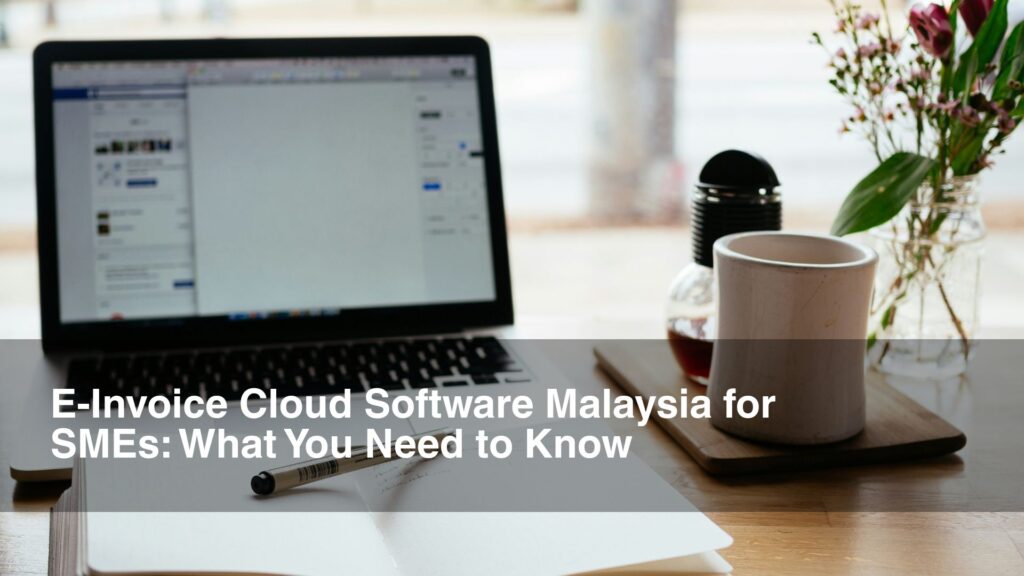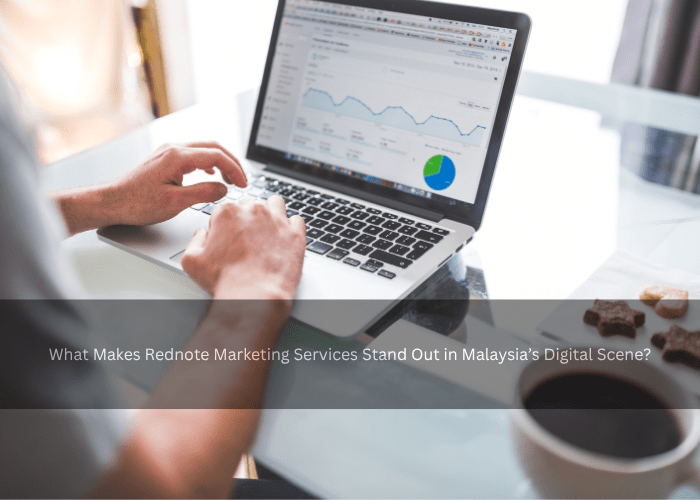Introduction to E-Invoice Cloud Software Malaysia
E-invoicing has emerged as a pivotal component in the financial processes of small and medium enterprises (SMEs) in Malaysia. With the rapid digital transformation underway, businesses are increasingly adopting e-invoice cloud software Malaysia to streamline their invoicing processes. This software offers a modern solution for creating, sending, and managing invoices electronically, allowing SMEs to reduce paperwork, increase efficiency, and enhance accuracy.
The relevance of e-invoicing is underscored by the Malaysian government’s push towards digitalization and regulatory mandates aimed at improving transparency and accountability in business transactions. E-invoice cloud software Malaysia provides several advantages for SMEs, including quicker processing times, easier tax compliance, and improved cash flow management. By eliminating manual errors and automating tedious tasks, businesses can focus more on growth-oriented activities rather than administrative burdens.
Moreover, adopting e-invoicing aligns with global trends in digitization, where businesses are encouraged to engage in more environmentally friendly and efficient practices. In Malaysia, SMEs are embracing this shift, driven by the need for competitiveness in a fast-evolving marketplace. An additional benefit of implementing an e-invoice system is the capacity to integrate seamlessly with other financial tools and platforms, facilitating better reporting and analysis of financial data.
As the landscape of billing and invoicing practices continues to evolve, embracing e-invoice cloud software Malaysia is not merely advantageous but essential for SMEs aiming to navigate the complexities of modern commerce successfully. With regulatory frameworks evolving and consumer preferences shifting towards digital solutions, the transition to cloud-based invoicing becomes increasingly relevant for sustaining growth and efficiency in the Malaysian market.
Understanding the LHDN E-Invoicing Mandate
The Lembaga Hasil Dalam Negeri (LHDN) has implemented an e-invoicing mandate aimed at promoting transparency and efficiency in the taxation process across Malaysia. This mandate requires SMEs to adopt e-invoice cloud software in their invoicing practices to ensure compliance with tax regulations. Understanding the specific requirements of this mandate is crucial for SMEs looking to streamline their operations while adhering to legal obligations.
As outlined by LHDN, all businesses with a gross turnover exceeding RM500,000 are required to prepare and submit e-invoices through the approved platforms. This stipulation is designed to facilitate real-time reporting and improve the accuracy of tax assessments. Consequently, SMEs must integrate e-invoice cloud software into their accounting systems by the deadline set by LHDN to avoid penalties and ensure efficient compliance.
The initial rollout of the e-invoicing mandate commenced in 2023 with mandatory compliance expected by June 2024 for larger SMEs. Smaller enterprises and newer businesses in the market are granted an extended grace period, with compliance deadlines staggered based on revenue criteria. This phased introduction seeks to accommodate the varying capacities of SMEs, providing them with ample time to adjust to the digital transition.
Failing to comply with the LHDN e-invoicing mandate carries serious repercussions. Businesses that do not submit e-invoices or adhere to the compliance requirements may be subject to fines, penalties, and tax audits. These implications underline the importance of adopting e-invoice cloud software in Malaysia not only for operational efficiency but also for safeguarding against legal liabilities. By embracing these advancements, SMEs can ensure they meet their tax obligations while maintaining competitiveness in a growing digital economy.
Benefits of E-Invoice
The adoption of e-invoice cloud software in Malaysia presents numerous benefits tailored for small and medium enterprises (SMEs). One of the most notable advantages is the significant increase in efficiency within billing processes. Traditional invoicing methods often involve cumbersome manual tasks that not only consume time but also pose a higher risk of errors. In contrast, e-invoice cloud software automates these processes, allowing for swift generation and distribution of invoices, thereby significantly reducing the turnaround time for billing.
Additionally, implementing e-invoice cloud software can lead to considerable cost savings. By streamlining invoicing and minimizing paper usage, SMEs can cut down on administrative overheads related to printing, mailing, and storing paperwork. Moreover, cloud-based solutions typically operate on a subscription model, which can be more affordable compared to maintaining large in-house systems. This relegation of maintenance and operational tasks to the software provider allows SMEs to focus their resources on core business activities.
Another critical benefit of e-invoice software lies in the improved cash flow management it facilitates. With real-time visibility into the invoicing process, businesses can track payments and outstanding invoices more effectively. This transparency aids in forecasting cash flow, thus allowing SMEs to make informed business decisions. Furthermore, prompt invoicing can accelerate payment cycles, empowering businesses to receive funds sooner and maintain healthy cash flow.
Lastly, enhanced accuracy in invoicing is a fundamental advantage offered by e-invoice cloud software. The automated systems reduce the likelihood of human errors associated with manual input. This accuracy not only fosters better relationships with clients but also minimizes disputes over billing discrepancies. In conclusion, the adoption of e-invoice cloud software in Malaysia represents a strategic investment that can yield operational efficiencies, cost-effectiveness, and improved financial management for SMEs.
Key Features to Look for in E-Invoice Cloud Software Malaysia
When selecting e-invoice cloud software in Malaysia, small and medium-sized enterprises (SMEs) must prioritize specific features that enhance efficiency and streamline invoicing processes. Automation tops the list, as it significantly reduces the manual work involved in generating and sending invoices. Automation not only saves time but also minimizes the risk of human error, thus improving accuracy in billing and financial reporting.
Integration capabilities are another critical feature to consider. The ability of e-invoice cloud software to seamlessly integrate with existing accounting, inventory, and customer relationship management (CRM) systems can greatly enhance the overall functionality. This feature ensures that data flows smoothly between platforms, which ultimately leads to improved operational efficiency.
User-friendliness is also a significant criterion. SMEs typically lack extensive IT resources; therefore, the e-invoice cloud software should be intuitive and easy to navigate. A user-friendly interface helps employees quickly adapt to the software, reducing training time and increasing productivity. It is advisable to choose software that offers customizable templates and straightforward setup processes, catering specifically to the unique needs of each business.
Compliance monitoring is essential to ensure that the software aligns with local regulations and taxation laws in Malaysia. An effective e-invoice solution should automatically update to comply with any changes in legislation, thus shielding SMEs from potential legal issues associated with invoicing practices.
Lastly, robust customer support cannot be overlooked. The availability of knowledgeable support staff can significantly enhance the user experience, particularly during the initial setup or when troubleshooting issues. Having access to reliable customer service helps SMEs to resolve any challenges swiftly, ensuring continuous business operations.
Choosing the Right E-Invoice Cloud Software Malaysia Vendor
When it comes to selecting the appropriate e-invoice cloud software in Malaysia, it is essential to choose a vendor that meets your specific requirements as a small or medium-sized enterprise (SME). Several factors should be taken into consideration to ensure an optimal fit.
Firstly, pricing models vary significantly among vendors, so it is crucial to evaluate not only the upfront costs but also the subscription fees associated with ongoing use. Some providers offer pay-per-use options, which might be financially beneficial for SMEs that have fluctuating invoicing needs. Furthermore, examining any hidden costs, such as support fees or transaction charges, can provide a clearer understanding of the total expenditure.
Secondly, gathering and analyzing reviews from other users can be instrumental in making an informed decision. Online testimonials and case studies often provide insights into user experiences regarding functionality, reliability, and customer support. This peer feedback is invaluable for identifying potential pitfalls or exceptional features within the e-invoice cloud software Malaysia providers offer.
Another key aspect is the quality of customer support. In a digital environment, timely assistance is paramount since invoicing issues can adversely affect cash flow. Consider vendors that offer 24/7 customer support and multiple channels for communication, such as phone, chat, or email.
Lastly, the adaptability of the software to your business’s unique requirements is critical. The e-invoice cloud software should integrate seamlessly with existing systems, ensuring a smooth transition and ongoing functionality. Look for features that can be tailored or customized, providing you with a solution that evolves with your business growth.
By taking these factors into account, SMEs can ensure they select a reliable vendor for e-invoice cloud software in Malaysia that not only meets their current needs but also supports future scalability and efficiency.
Implementation Process of E-Invoice Cloud Software Malaysia
Implementing e-invoice cloud software in Small and Medium Enterprises (SMEs) is a structured process that requires careful planning and execution. The first step is conducting a comprehensive needs assessment. This involves identifying the specific invoicing challenges faced by the organization and determining the features and functionalities that would best address these issues. By involving key stakeholders from various departments, SMEs can ensure that the chosen e-invoice cloud software aligns with their operational goals.
Once the requirements have been established, the next step is selecting the appropriate e-invoice cloud software Malaysia that meets the identified needs. Organizations should consider factors such as compatibility with existing systems, scalability, and user-friendliness. It is beneficial to involve the IT department in evaluating potential software solutions, as they can assess the technical aspects and integration capabilities with the current infrastructure.
Having selected a software solution, the integration process begins. This phase involves configuring the e-invoice system to work seamlessly with other business applications, such as accounting and customer relationship management systems. Proper data migration and testing are essential during this stage to ensure that all financial records are accurate and that the software operates as intended.
In parallel with technical integration, training for employees becomes pivotal. Staff must be trained not only on how to use the new e-invoice system but also on the benefits of this transition to digital invoicing. Training sessions should be tailored to different roles within the organization, ensuring all users are equipped with the necessary skills to utilize the software effectively.
Finally, to ensure a smooth transition, SMEs are encouraged to implement a phased rollout of the e-invoice cloud software. This allows any unforeseen issues to be addressed promptly while providing a safety net for employees still adapting to the new process. By following these steps, SMEs can significantly enhance their invoicing process, move towards digital transformation, and enjoy the numerous advantages that e-invoice cloud software offers.
Common Challenges SMEs Face with E-Invoice Cloud Software Malaysia
The adoption of e-invoice cloud software in Malaysia by Small and Medium Enterprises (SMEs) presents an array of challenges that can hinder successful implementation. One significant issue is the resistance to change among employees and management alike. Many individuals are accustomed to traditional invoicing methods, causing reluctance to embrace new technology. Overcoming this resistance requires effective change management strategies, including training and communication to ensure all stakeholders understand the benefits of e-invoice cloud software. Demonstrating how this innovation streamlines processes can foster a more accepting environment.
Another common challenge is the integration of e-invoice cloud software with existing systems. SMEs often rely on various software for accounting, inventory management, and customer relationship management. Ensuring seamless integration can be complex and may require additional technical expertise. To address this, SMEs should conduct a thorough assessment of their current systems and seek e-invoice cloud solutions that offer robust integration capabilities. Collaborating with a knowledgeable IT partner can also facilitate a smoother transition by providing support throughout the integration process.
Financial constraints also pose significant challenges for SMEs considering the implementation of e-invoice cloud software in Malaysia. Budget limitations can restrict access to high-quality solutions that provide optimal performance and support. It is advisable for SMEs to explore various pricing models and choose solutions that align with their financial capabilities. Some cloud software providers offer tiered plans or subscription-based pricing, allowing SMEs to select the level of service that best meets their needs without overextending their budgets.
Addressing these common challenges is crucial for SMEs aiming to leverage the advantages of e-invoice cloud software. Through strategic planning and resource allocation, businesses can overcome these obstacles and experience the efficiency and accuracy that electronic invoicing brings.
Case Studies of SMEs Using E-Invoice Cloud Software in Malaysia
In recent years, several small and medium-sized enterprises (SMEs) in Malaysia have effectively integrated e-invoice cloud software into their operations. These businesses have reported significant improvements in their billing processes, compliance, and overall efficiency. For instance, a local manufacturing company experienced delays in invoicing and payment collection, adversely affecting cash flow. By adopting e-invoice cloud software Malaysia, they streamlined their invoicing process, reducing the time taken to send invoices from several days to mere minutes. This swift invoicing led to improved cash flow and quicker payments from clients, ultimately aiding their financial stability.
Another compelling case is that of a retail SME that struggled with the manual handling of invoices and compliance with the Malaysian Inland Revenue Board (LHDN) requirements. The implementation of e-invoice cloud software Malaysia enabled them to automate their invoicing process, ensuring that all invoices were accurate and compliant with regulatory mandates. By providing real-time access to billing data, the e-invoice system ensured that the company could easily generate reports required for tax purposes, minimizing the risk of penalties due to non-compliance.
Furthermore, a service-based SME in the technology industry adopted e-invoice cloud software to optimize project billing. Previously, the company dealt with misunderstandings regarding billable hours, leading to strained client relationships. The e-invoice system provided clear documentation and visibility regarding service delivery and billing, fostering transparency. As a result, customer satisfaction skyrocketed alongside a notable increase in repeat business, illustrating the transformative power of modern billing tools.
These examples illustrate the significant benefits SMEs in Malaysia experience by implementing e-invoice cloud software. The transition not only enhances operational efficiency but also promotes adherence to regulatory mandates, ultimately equipping businesses for long-term growth and success.
Conclusion: The Future of E-Invoicing
The landscape of invoicing in Malaysia is undergoing a transformative shift, largely driven by the increasing adoption of e-invoice cloud software. For small and medium-sized enterprises (SMEs), this transition represents a significant opportunity to enhance efficiency and improve financial management. Throughout this blog post, we have explored various facets of e-invoicing, from its definition and benefits to its implementation and regulatory considerations. As more businesses recognize the advantages of streamlined invoicing processes, the integration of e-invoice solutions is set to gain momentum.
One of the key benefits of using e-invoice cloud software in Malaysia is the reduction of operational costs. SMEs can drastically minimize paperwork and related administrative tasks, allowing them to allocate resources more effectively. Furthermore, these digital invoicing systems often come with built-in compliance features, which help businesses adhere to local regulations without incurring hefty penalties. This aspect is particularly crucial as Malaysian regulations continue to evolve, emphasizing the need for SMEs to remain adaptable and informed.
Moreover, the ongoing digital transformation in Malaysia suggests that e-invoicing will not only be a trend but a standard practice for businesses aiming to stay competitive. As technology advances, we can expect enhancements in e-invoice cloud software that will facilitate better data integration, reporting, and automated reconciliation processes. Additionally, the ability to access real-time invoice data will empower SMEs to make more informed financial decisions, further driving their growth in a dynamic market environment.
In conclusion, embracing e-invoice cloud software is imperative for SMEs in Malaysia. By leveraging these technological advancements, businesses can enhance their financial operations while positioning themselves for future success. The journey toward a fully digital invoicing ecosystem is well underway, and SMEs must remain proactive to capitalize on the opportunities that lie ahead.










